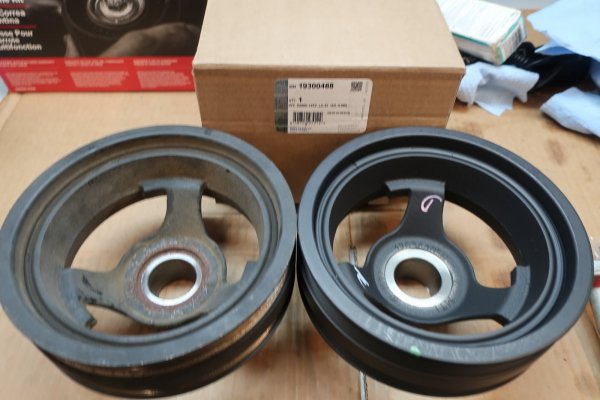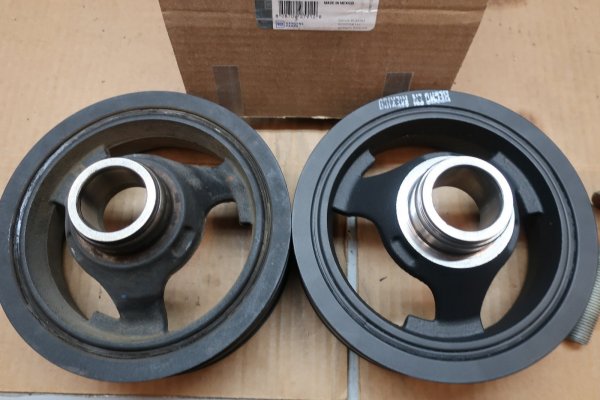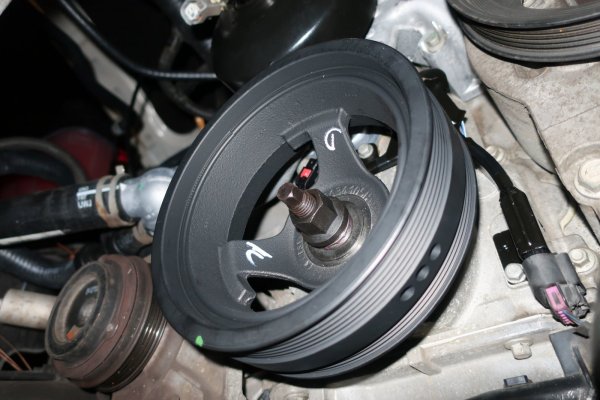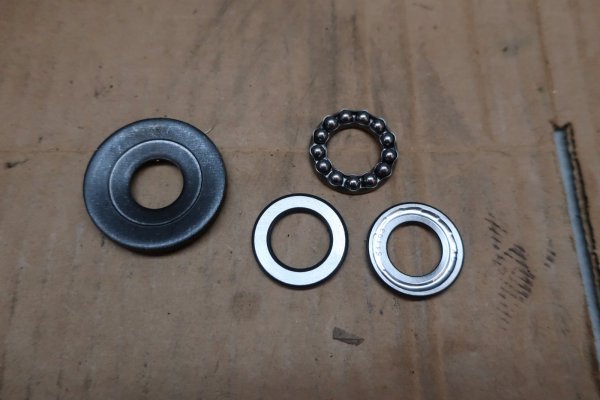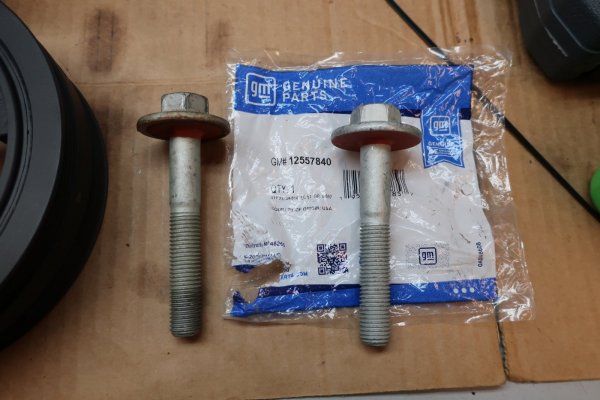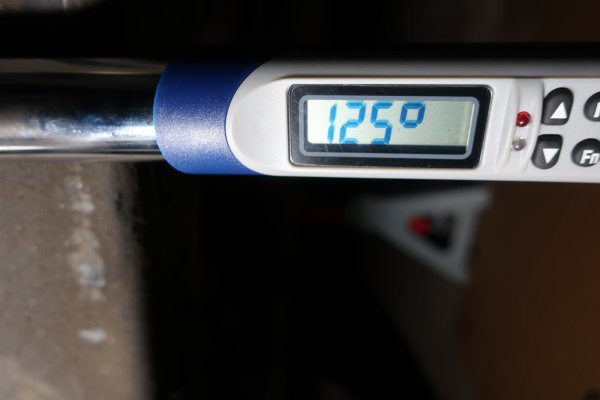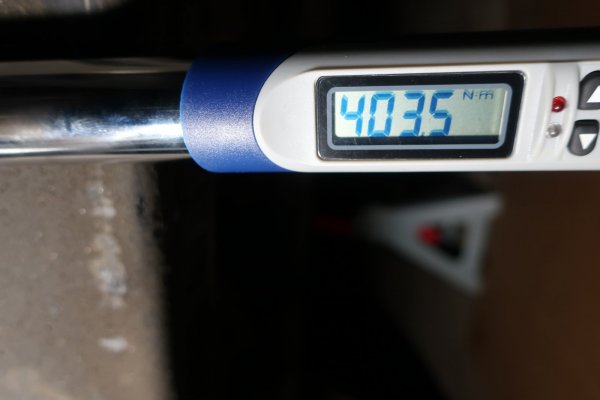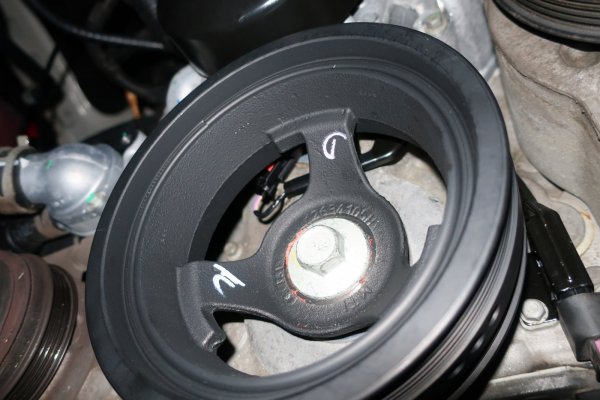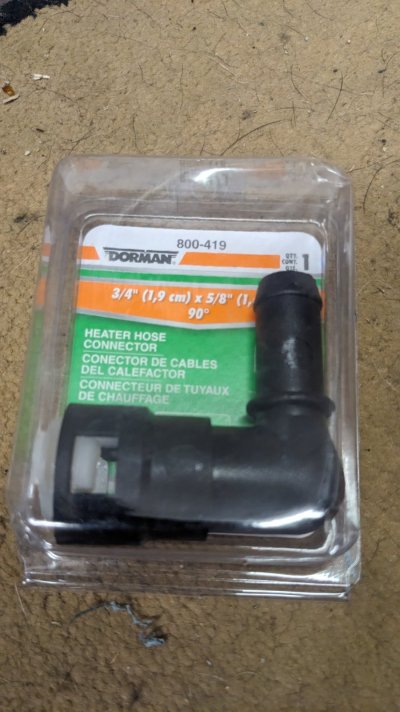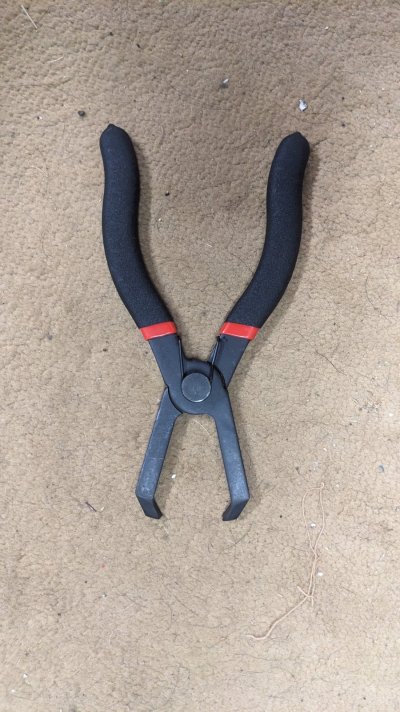skpyle
Full Access Member
- Joined
- May 15, 2021
- Posts
- 395
- Reaction score
- 1,025
Luckily for me, the removal tool did not slip off and the pulley started moving off the crankshaft snout with me just using a long handled 1/2" drive ratchet. It did take many, many cranks on the ratchet to get the pulley completely off.
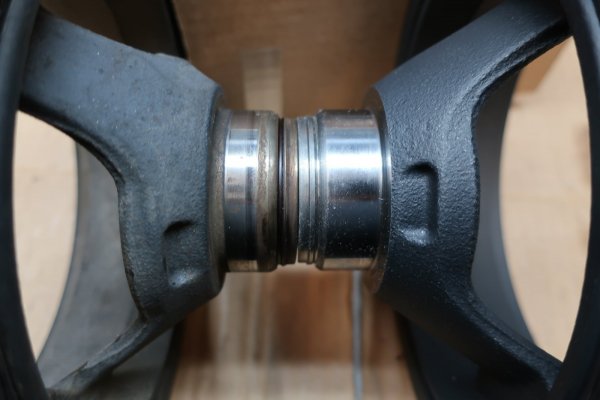
Old pulley at left, new pulley at right. Note the flats cast into the backside of the hub. This is where the notches on the removal tool arms sit.
Pulley out of the way, I replaced the front main seal. Old seal looked good. Too bad. I always replace a seal for a rotating component whenever I remove said component. Old one popped right out with two tugs on a seal puller. I coated the lips of the new seal with assembly lube and tapped it in flush and even with the timing cover surface.
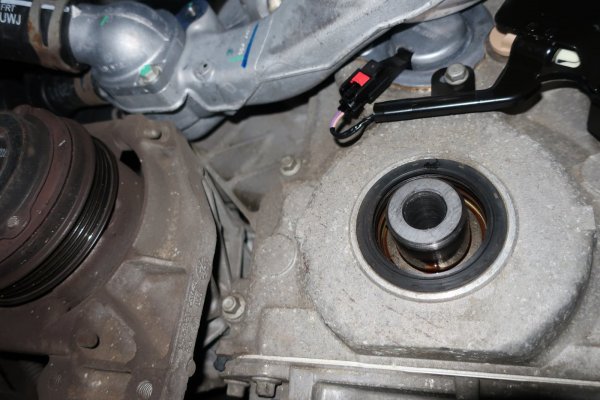
Old front main seal in place in the timing cover.
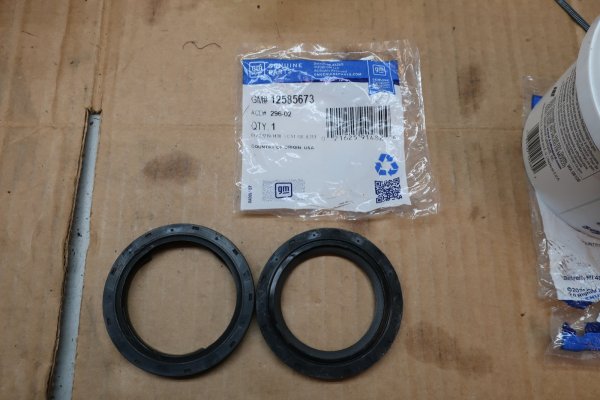
Old seal at left, new GM seal 12585673 at right.
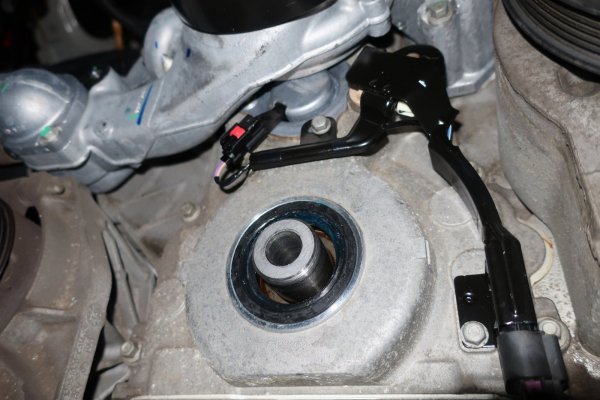
New seal installed flush with timing cover, lips coated in assembly lube.

Old pulley at left, new pulley at right. Note the flats cast into the backside of the hub. This is where the notches on the removal tool arms sit.
Pulley out of the way, I replaced the front main seal. Old seal looked good. Too bad. I always replace a seal for a rotating component whenever I remove said component. Old one popped right out with two tugs on a seal puller. I coated the lips of the new seal with assembly lube and tapped it in flush and even with the timing cover surface.

Old front main seal in place in the timing cover.

Old seal at left, new GM seal 12585673 at right.

New seal installed flush with timing cover, lips coated in assembly lube.

